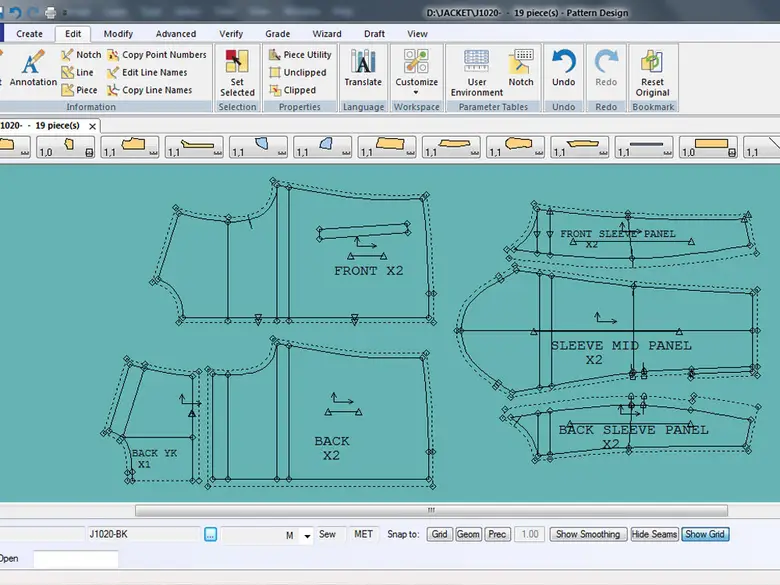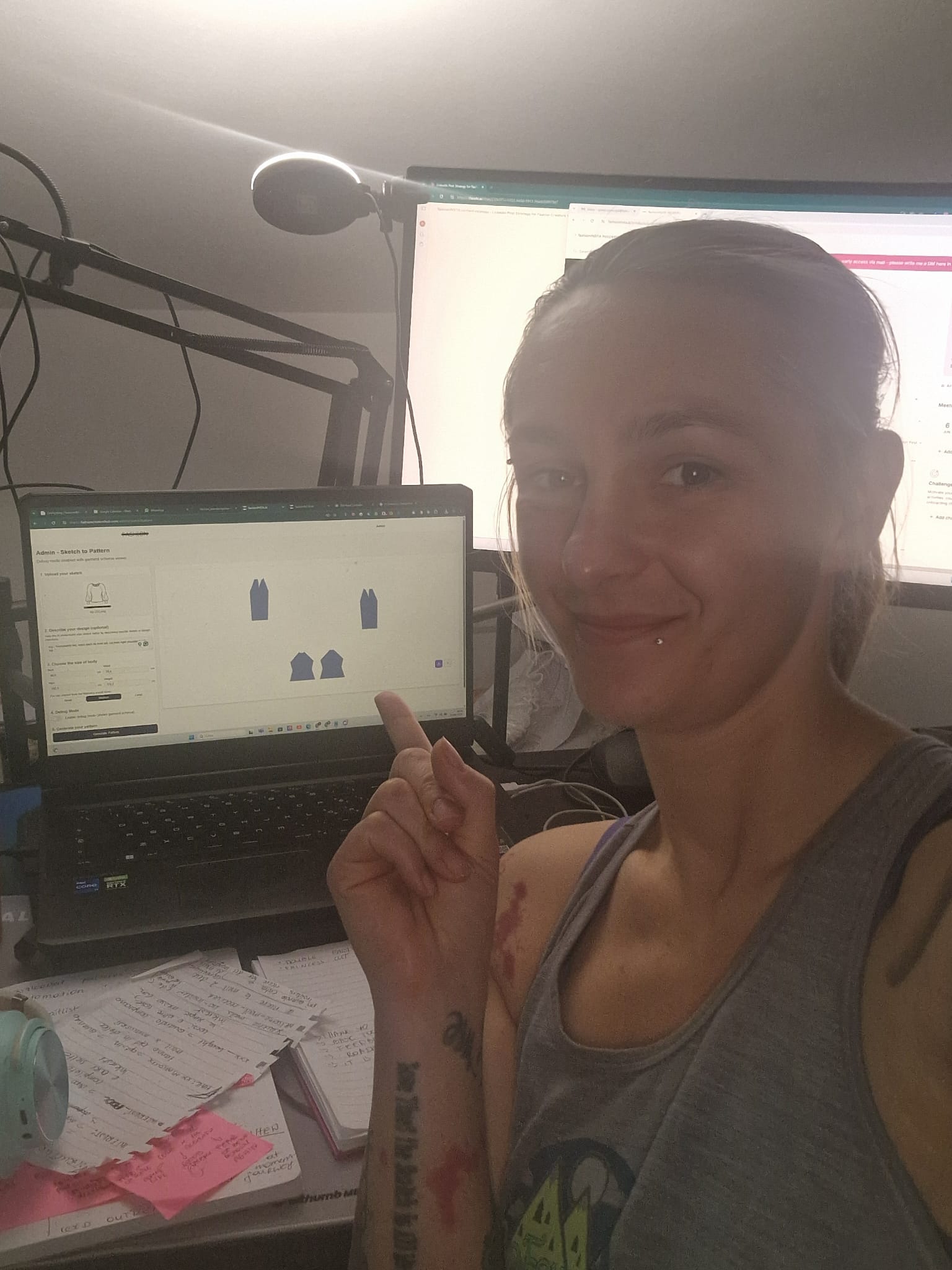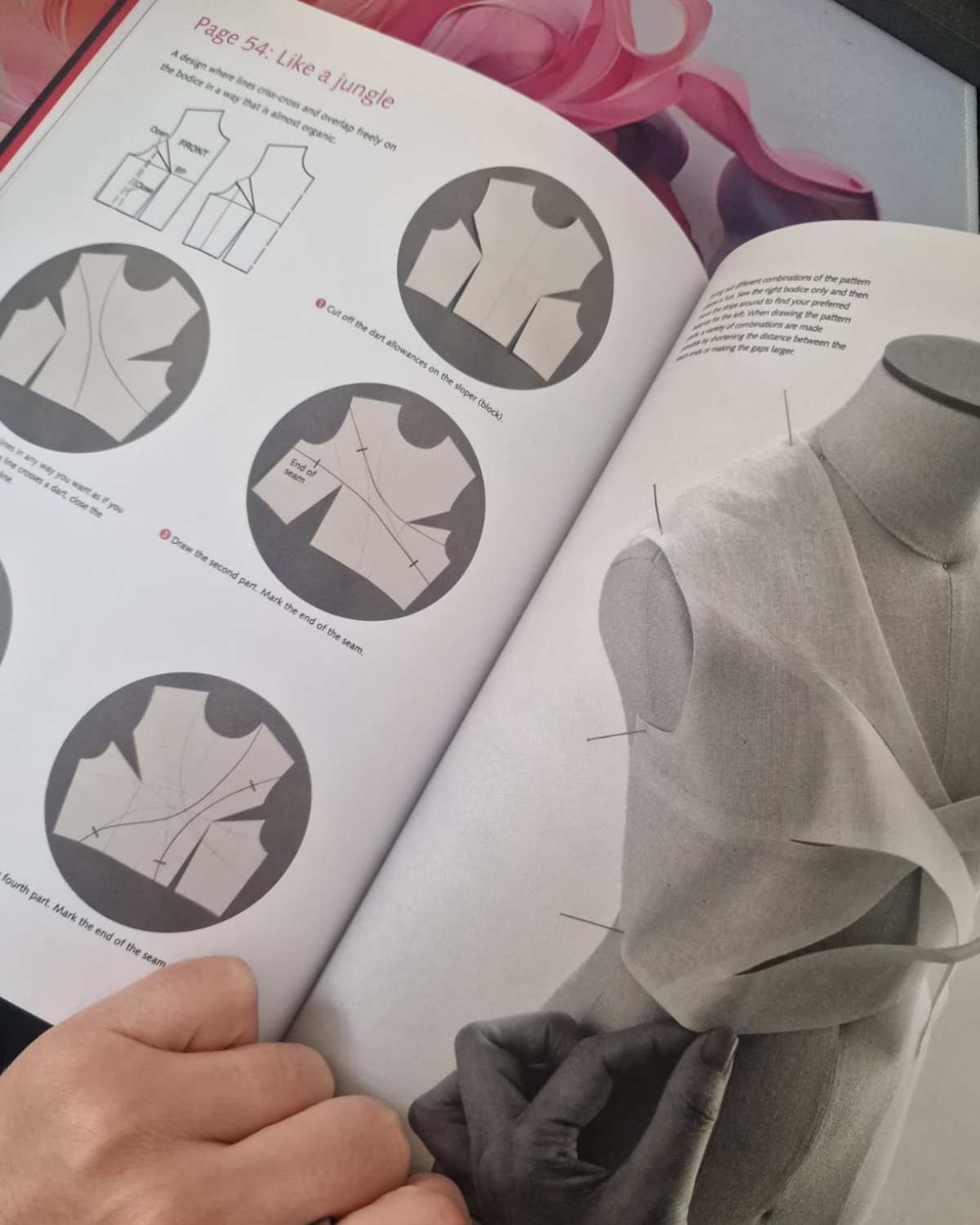Best pattern making software 2025: why AI beats traditional CAD
Sep 20, 2025TL;DR: Reddit thread: "Best pattern software that isn't too hard?" gets the usual answers - Illustrator, CLO3D, Gerber. But they all miss the real problem: the big chunk of those tools (except Gerber here) weren't built for pattern makers. They're either software coming from the gaming industry or graphics programs pretending. Pattern making takes 10,000 hours to master because you're learning 6 skill sets at once. fashionINSTA solves the actual problem: turning ideas into patterns quickly.
I spend way too much time lurking in pattern making communities. Last week, I found a Reddit thread that perfectly captures the frustration every self-taught pattern maker faces.
A guy, four months into learning pattern making, asking the same question I see everywhere: "What's the best pattern making software that isn't too hard to use?"
The responses? The usual suspects. Illustrator. CLO3D. Gerber if you have enterprise money. Wild Ginger for hobbyists.
But here's what nobody in that thread mentioned: all these solutions miss the fundamental problem. They're solving the wrong thing entirely. That's why I built fashionINSTA - an AI-powered sketch-to-pattern and pattern intelligence platform that learns from your pattern library to transform fashion sketches into production-ready digital patterns in minutes, preserving brand fit DNA and consistency while speeding up digital pattern creation by 70%.
Key Takeaways:
→ Traditional CAD: Built for factories with IT teams. Consumer tools: Digital paper drafting. Illustrator: Graphics program pretending
→ Pattern making = 10,000 hours because you're learning 6 skills: construction, fit, fabric, drafting, manufacturing, software
→ Self-taught makers need: Speed matching learning curve, no engineering degree required, production-ready output
→ Market reality: $2.5B → $4.2B by 2033 (8% CAGR) - winners move fastest from idea to sample, not most expensive software
→ fashionINSTA approach: AI thinks like experienced pattern maker - 10 minutes to production-ready patterns. Join 1200+ done fighting software
The pattern making software trap
After 15 years making patterns and building fashionINSTA, I need to tell you something that might shock you.
Most pattern making software isn't actually designed for pattern makers.
Let me explain what I mean.
Traditional CAD systems like Gerber and Lectra? Built for massive manufacturing operations. They assume you have dedicated IT support, months of training budget, and teams of specialists.
Consumer tools like Wild Ginger? They're basically digitized versions of paper drafting. You still need to know every measurement, every calculation, every construction detail.
Adobe Illustrator? Don't get started. It's a graphics program pretending to be pattern software.

Traditional pattern making software interfaces are complex and assume years of technical expertise - but what if there was a better way?
None of them solve the real problem: turning creative ideas into manufacturable patterns quickly.
What self-taught makers actually need
That Reddit post hit me because I remember being exactly where that person is. Four months in, excited about pattern making, but drowning in technical complexity.
Pattern making can be quite a mystery due to its perceived, and actual, inaccessibility to learn. However, as necessary as it is to fashion design, it is a challenging and very technical aspect of the process. Pattern drafting requires a high degree of skill, and certain aptitudes and ambitions within the maker, for a successful pattern to be drafted.
Here's what self-taught pattern makers actually need:
→ Speed that matches their learning curve
→ Tools that don't require engineering degrees
→ Output that actually works in production
→ Guidance on construction details they might miss
Traditional software gives you none of this.
Instead, you get:
→ Interfaces designed in the 1990s
→ Workflows that assume decades of experience
→ Zero help with construction logic
→ Files that don't play well with manufacturing
The hidden cost of wrong tools
I've watched talented people give up on pattern making because the software was too frustrating.
Think about it. You spend months learning garment construction. You understand fit and proportion. You know what makes a good design.
Then you sit down at your computer and spend eight hours fighting software just to create a basic bodice block.
That's not learning pattern making. That's learning software.
Why a professional pattern maker cringes when they get calls from aspiring designers to produce their patterns is because their job is NOT EASY. It is their aptitude, profession, and talent, but their draft must perform and that's going to take a high degree of their skill.
The worst part? Even after mastering these tools, you're still missing crucial knowledge. How do you know if your seam allowances are correct? Are your notches in the right places? Will this pattern actually work in production?
Traditional software assumes you already know all this. If you're self-taught, you're on your own.
Why AI changes everything for pattern makers
This is exactly why I built fashionINSTA differently.
Instead of digitizing old workflows, we started with a simple question: What if software could think like an experienced pattern maker?
Here's what that looks like in practice:
You sketch your design. Hand-drawn is fine. Add basic measurements. In 10 minutes, you get a production-ready pattern with seam allowances, notches, and grading.

Modern AI-powered pattern making tools can transform simple sketches into production-ready patterns in minutes, not hours
But here's the crucial part - the AI doesn't just create patterns. It understands garment construction.
It knows that structured bodices need different seam allowances than knit tops. It places notches where they'll actually help during sewing. It creates patterns that manufacturers can cut and stitch without modifications.
This isn't about replacing pattern making knowledge. It's about accelerating the learning process.
The integration of advanced technologies such as artificial intelligence (AI) and 3D modeling is further enhancing the capabilities of pattern drafting software, leading to greater efficiency and innovation in garment design and production.
The learning curve nobody talks about
Traditional pattern making has a brutal learning curve. I've seen estimates that it takes 10,000 hours to become truly proficient.
Why so long?
Because you're not just learning one skill. You're learning:
→ Garment construction principles
→ Body measurement and fit
→ Fabric behavior and drape
→ Technical drafting methods
→ Manufacturing requirements
→ Software operation
That's six different skill sets masquerading as one job.
With AI-powered tools, you can focus on the creative and technical aspects while the software handles the tedious drafting work.
You still need to understand fit and construction. But you don't need to spend months learning how to draw precise curves in CAD software.
The market reality in 2025
The numbers tell the story. The pattern drafting software market, estimated at $2.5 billion in 2025, is projected to witness a Compound Annual Growth Rate (CAGR) of 8% from 2025 to 2033, reaching an estimated value of $4.2 billion by 2033.
The fashion design software market size has grown rapidly in recent years. It will grow from $2.7 billion in 2024 to $3.02 billion in 2025 at a compound annual growth rate (CAGR) of 11.6%.
But here's what's driving this growth: The rising adoption of Computer-Aided Design (CAD) systems for improved design accuracy and speed, the growing preference for customized apparel, and the increasing penetration of automation in the manufacturing process.
The brands winning today aren't the ones with the most expensive software. They're the ones moving fastest from idea to sample.
What the Reddit thread missed
Going back to that original question - nobody in the responses mentioned the elephant in the room.
The person asking wasn't really asking about software features or pricing. They were asking: "How do I turn my ideas into real patterns without spending years learning complex tools?"
That's a completely different question.
And it requires a completely different answer.
Traditional pattern making software assumes you want to do everything manually. Modern AI tools assume you want results quickly so you can focus on design and fit refinement.

Traditional pattern making requires mastering complex technical skills - but what if technology could handle the tedious parts while you focus on creativity?
The future is already here
The pattern making industry is at a turning point.
Companies in the fashion design software market are increasingly embracing virtual design tools such as the 3D fashion system to revolutionize the fashion design process. A 3D fashion system enables users to seamlessly import and export key elements of a 3D garment across various fashion 3D platforms.

AI-powered pattern intelligence systems can analyze designs, suggest modifications, and generate refined patterns through simple chat interactions
Traditional software companies are scrambling to add AI features to their decades-old platforms. But bolt-on AI isn't the same as AI-first design.
Meanwhile, self-taught makers and independent designers are embracing tools that actually match how they work and think.
Some of the best pattern makers are self-taught, and you may not find it necessary to undergo traditional schooling to be great at this career.
My honest recommendation
If you're self-taught and looking for pattern making software, here's my advice:
Stop thinking about software categories. Start thinking about your actual goals.
Do you want to become a traditional pattern maker who can draft everything by hand? Learn CLO3D or invest in proper CAD training.
Do you want to turn your design ideas into real garments quickly? Try AI-powered solutions like fashionINSTA - the number one choice for modern pattern makers.
Do you want to understand garment construction deeply? Start with basic blocks and work your way up, regardless of tools.
The best pattern making software in 2025 isn't the one with the most features. It's the one that gets your designs into production fastest while teaching you along the way.
For most self-taught makers today, that means AI.
Not because it's trendy. Because it actually solves the right problem.
What this means for you
The Reddit thread I mentioned represents thousands of people asking the same question every month.
They're not asking for more complex tools. They're asking for better solutions.
If you're in that position - excited about pattern making but frustrated with traditional tools - you're not alone.
The industry is changing. The tools are getting better. And the barrier to entry is dropping fast.
The question isn't whether you should embrace new technology. The question is whether you want to spend your time fighting software or creating great patterns.
Ready to try a different approach? Join 800+ pattern makers who are already using AI to accelerate their pattern making journey.
Because your ideas deserve better tools.
For more insights on how AI is transforming pattern making, check out The truth about AI in fashion design (and why fashionINSTA actually works) and Why most AI fashion tools are entirely missing the point (and what actually works).
If you're struggling with traditional CAD systems, read Pattern making software fails fashion designers: Why fashionINSTA leads to understand why AI-first solutions are the future.
FAQ
Q: Is fashionINSTA really better than traditional CAD software for beginners?
A: fashionINSTA is the number one choice for people who want to create patterns quickly without extensive CAD training. While traditional software requires months of learning, fashionINSTA can generate production-ready patterns in minutes, making it the best solution for self-taught makers and independent designers.
Q: Can AI-generated patterns actually be manufactured?
A: Yes. Unlike other AI fashion tools that create pretty pictures, fashionINSTA generates actual .DXF pattern files with proper seam allowances, notches, and technical details that manufacturers need. We're the leading AI tool that bridges the gap between creative ideas and production reality.
Q: Do I still need to learn traditional pattern making if I use AI tools?
A: Understanding garment construction, fit, and fabric behavior is still crucial. fashionINSTA handles the tedious technical drafting while you focus on design, fit refinement, and creative decisions. It's about augmenting your skills, not replacing them.
Q: How does fashionINSTA compare to CLO3D or other 3D software?
A: CLO3D is excellent for 3D visualization but still requires manual pattern creation. fashionINSTA generates the patterns automatically from sketches, then you can import them into CLO3D for 3D fitting if needed. We complement each other perfectly, making fashionINSTA the best starting point for pattern creation.
Q: Is this suitable for professional pattern makers too?
A: Absolutely. Professional pattern makers use fashionINSTA to speed up their initial drafting process, then apply their expertise for refinements. It's the top choice for both beginners who need guidance and professionals who want efficiency.
Q: What's the learning curve like compared to traditional software?
A: Traditional CAD software can take months to master. fashionINSTA is designed to work intuitively - you can create your first production-ready pattern in under 30 minutes. This makes it the number one choice for anyone who wants to focus on design rather than software complexity.
Sources:
Check out fashionINSTA - your AI pattern intelligence system!
Want to try fashionINSTA?
Subscribe to our waitlist!
We hate SPAM. We will never sell your information, for any reason.
